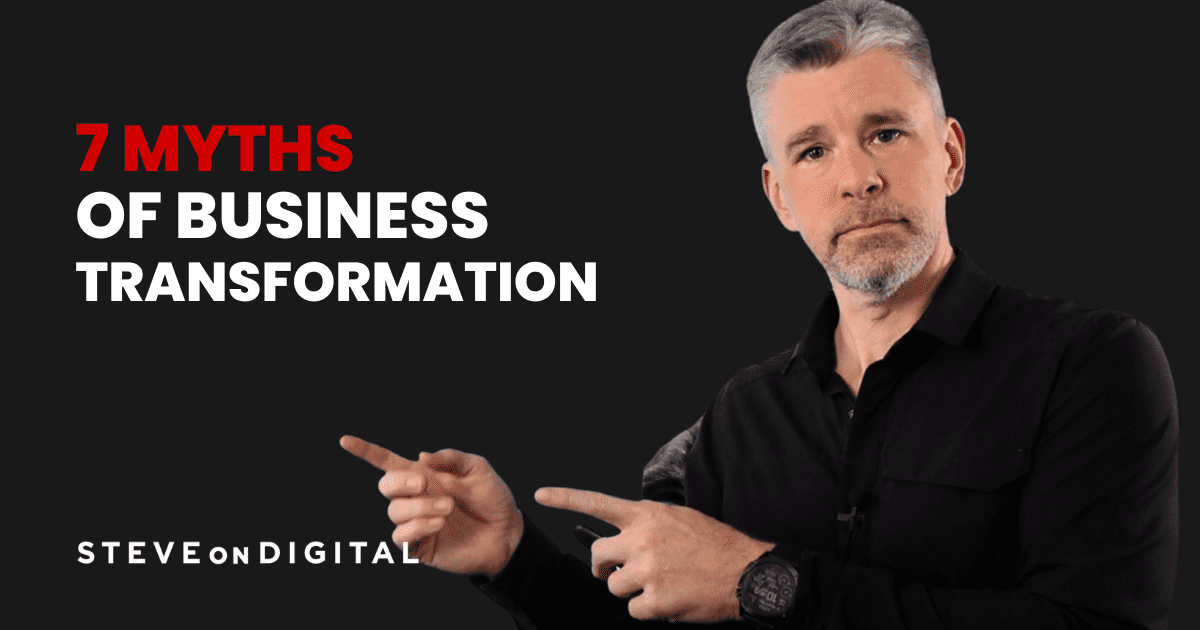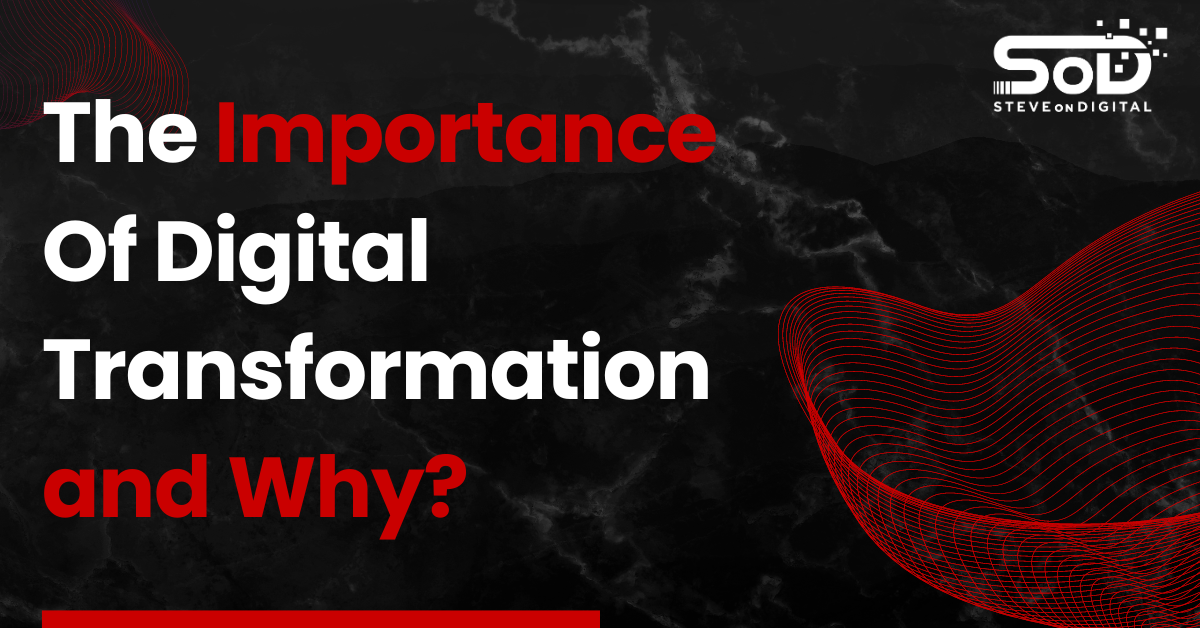Reluctant to embark on a journey of digital transformation? Maybe it’s because you’re believing one or more of the common myths about digital transformation. Through my years of experience working as an IT consultant for small- and medium-sized businesses, I’ve heard it all. I mean, I’ve heard a plethora of reasons why digital transformation was unwise, impractical or out of reach. Yet, these reasons are often just myths.
Let me debunk seven of the most common myths for you.
1. Digital Transformation is ONE Project
Business owners often think of digital transformation as one massive project with a beginning and an end. Yet, this is not the case. Digital transformation is a journey. As such, it doesn’t just involve one big project but, instead, many smaller projects.
To coordinate these projects, the IT Team needs to develop a Digital Roadmap before embarking on the journey. The Digital Roadmap splits the steps into sequences with pauses between the sequences. These pauses serve as time to reassess and adjust. A Digital Roadmap also ensures that the steps will be integrated into the overarching journey.
Therefore, by perceiving digital transformation as a journey rather than a destination, management will understand the IT department’s reality.
2. Digital Transformation Requires EVERYTHING to change
You may be thinking that you’ve already spent time and money developing processes that work well. So, why throw the baby out with the bathwater? Exactly. Digital transformation does not mean that all your current processes will become obsolete. In fact, it should instead adapt to the way employees work and customers interact with your business now.
As you well know, changing everything in a business would inevitably lead to utter resistance. Even smaller changes can lead to insecurities and frustrations. Yet, inefficiencies will have to be corrected. To counter resistance, a digital transformation must integrate pauses between the sequences to allow employees to absorb changes over time.
So, no, not everything will have to change. And smart planning using a Digital Roadmap will mitigate the resistance to the changes that must be made.
3. Digital Transformation takes FOREVER
You may be yelling at your computer right now, “But you just said that Digital Transformation is a journey and journeys take forever, right?” Yes, journeys take a long time, I’ll give you that, but they don’t take forever. In fact, by selecting a few quick wins at the beginning of the transformation, you’ll address the bulk of it early on. Doing so will also keep your employees motivated to continue the process.
Also remember, that as a journey, it is completed step by step, with pauses in between. By continually referring to your Digital Roadmap, everyone will be on board from the IT team to employees to management.
So, clearly communicating the steps will keep your digital transformation from languishing on forever, but rather to feel like a series of accomplishments.
4. Digital Transformation only leads to GADGETS
One of the arguments employees may use in their resistance to change is that digital transformation only leads to adding gadgets to an already well-oiled machine. These are not gadgets, however, but powerful tools that will propel the business forward.
When facing resistance, the goal is to include employees in the tool selection. You can do this by first getting their input on the strengths and weaknesses of their current tools. Then, include representatives in the selection process. And, once the Digital Roadmap has been drawn up, communicate the steps in a visual step-by-step manner.
Once the tools have been selected to smooth out processes, configure those tools, as much as possible, according to employees’ suggestions. Then train them on effectively working with the tool to do their jobs more efficiently.
For, when employees appropriate a tool, they will use it to its full potential.
5. Digital Transformation is ALL about technology
The goal of digital transformation is not to add technology for technology’s sake. No, rather technology is a tool that aids in transforming your business into a streamlined version of itself. The goal: better efficiency, better profit margins, less wasted time and energy.
In fact, the focus is not technology, but rather PEOPLE, the users of the technology. Start with THEIR needs to select and develop tools, and then to configure the tools according to employee needs.
PEOPLE, not technology, make the real difference in your business. Focus on them first.
6. Digital Transformation is only for BIG COMPANIES
This is my mission: debunking the myth that small- and medium-sized businesses cannot embark on a journey of digital transformation because they lack the resources, especially financial resources and human resources.
In fact, many solutions exist, such as affordable open source tools, training, and external consultants. Digital transformation is not just for big companies, but it is accessible for smaller businesses as well.
7. Digital Transformation is VERY EXPENSIVE
Connected to Myth #6, digital transformation is not just for financially-solid corporations, but it is also available to SMBs with a more limited cash flow. For example, many cloud-based solutions offer an affordable monthly payment plan. So rather than paying $20,000 upfront on a software program, these solutions cost a few dollars per user each month.
Not only that, but an express goal of a digital transformation is to streamline processes to save money. In the long run, your company will have less expenses, making a digital transformation a wise investment.
By reinvesting the cost savings into technological advances that allow your company to save even more money, you will benefit from a virtuous cycle.
Now that I’ve debunked these myths, are you ready to embark on a digital transformation journey?




